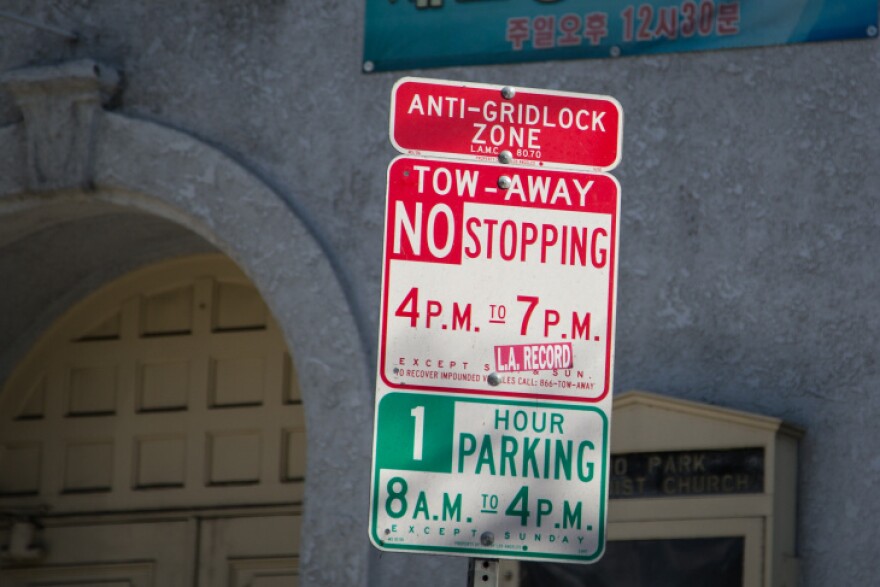Truth matters. Community matters. Your support makes both possible. LAist is one of the few places where news remains independent and free from political and corporate influence. Stand up for truth and for LAist. Make your year-end tax-deductible gift now.
Are LA's Anti-Gridlock Zones Being Enforced? Also What Are They

L.A. is notorious for its myriad parking signs, which at times come stacked like a column of cryptographs.
In some areas, those signs include anti-gridlock notifications.
They're perched on the top, they're fire-engine red, they're written in all caps, and they are meant to prevent drivers from parking or stopping in the designated area during rush hour.
In times gone by, Los Angeles city officials cracked down on the enforcement of anti-gridlock zones. But at least one LAist reader wonders if that's still the case.
"Are anti-gridlock zones still being enforced?" wrote reader Greg Hayden. "I regularly drive Sunset Boulevard in Hollywood and the parking lane is regularly blocked with parked cars, dumpsters, and trucks with their emergency flashers on."
The short answer is, yes -- they are still being enforced.
"[Anti-gridlock] zone restrictions are designed to alleviate heavy traffic by turning parking lanes into driving lanes during commute hours," Nora Frost, a spokesperson for the Los Angeles Department of Transportation told us. And "LADOT's parking enforcement regularly patrols Anti-Gridlock Zones."
Frost told us in an email that traffic officers who monitor all parking enforcement, including anti-gridlock zones, are on the job "24/7."
Anyone caught violating the anti-gridlock directives is subject to a $163 citation, she said.
Frost didn't elaborate on why the area around Sunset Boulevard in Hollywood might seem to be unmonitored at times. But should the need arise, you can always serve as your own parking enforcement, and dial up the city with information about a potential violation by calling 3-1-1 or downloading the MyLA311 app.







